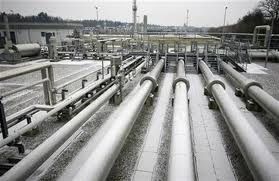
Electric power producers will continue to switch from coal to natural gas, according to a recent analysis from energy investment firm Tudor Pickering Holt.
Power generation demand for gas could be 27 billion cubic feet per day, or bcf/d, by 2017, the June 1 analysis forecasts, up from about 20 bcf/d in 2010.
Three drivers are pushing power companies nationwide to switch, according to the report.
Primary among them: an overbuild of gas-fired generation in the decade following 1998. The nation’s 230 gigawatts, or GW, of modern gas-fired generation capacity has run at 30 to 40 percent of its capacity for most of the time since it was built — meaning there’s a lot of gas-fired capacity ready to fire up at a moment’s notice.
Second, cheap, abundant gas — a phenomenon that those living in a shale gas–producing region are familiar with. From wellhead prices in the $6-per-thousand-cubic-feet range and spiking up from there in the mid-2000s, before the shale gas boom really hit, prices now hover closer to $4.
Finally, expensive coal.
“Eastern coal prices have risen largely due to continued operating cost pressure in Appalachia,” reads the analysis — again, a phenomenon familiar in West Virginia. “Marginal cost of production sits at $70+/ton … and environmental and regulatory pressures add to costs.”
Given all of these factors, the “dispatch curve,” or “supply stack” — that is, the order in which power plants are ordered by regional grid managers to be fired up each day, based on their cost per megawatt-hour generated — has changed.
Not too many years ago, in 2006, pretty much all of the nation’s coal-fired generation was cheaper than pretty much all of the nation’s gas-fired generation, the analysis says, so coal plants ran before gas.
Now, with the costs of generating from coal and from gas more in line, the most efficient gas plants are competing with the least efficient coal plants.
About 230 GW of the nation’s nearly 400 GW of gas-fired generation is very new and efficient ,and, with gas prices low, it is highly competitive.
The nation’s 330 GW or so of coal generation, the report notes, is more variable than the gas fleet. The small number of plants that burn low-energy lignite are less expensive to run because they operate near the mines.
Those that burn sub-bituminous coal run cheaply because the coal, from the Powder River Basin, is inexpensive to mine.
About 56 percent of coal generation burns bituminous coal, mined in Appalachia and elsewhere. Those plants are subject to the highest costs for coal and transportation of coal and the least efficient among them will be first to be edged out by gas.
Most switching is happening in the southeast and in the 13-state PJM Interconnection region of which West Virginia is a part, the analysis said.
Source: West Virginia Media
We use cookies to improve your experience. By continuing to use our site, you accept our Cookies, Privacy Policy,Terms and Conditions. Close X